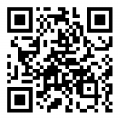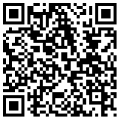視頻加載中...
Hi everyone.
大家好。
In this video, I will explain how to talk about routines and things that are always true.
在這個視頻中,我將解釋如何談論日常行為和始終真實的事情。
In other words, I will teach you all about the use of present simple.
換句話說,我會教你所有關于一般現在時的用法。
Are you ready?
你準備好了嗎?
Let's do it.
那開始吧。
We use the present simple, one, to talk about things that happen regularly.
我們用一般現在時,第一,來談論定期發生的事情。
I always get up at nine.
我總是九點起床。
She goes to school every morning.
她每天早上去上學。
Two, for a situation that we think is more or less permanent.
第二,用于表示我們認為或多或少是永久性的情況。
I work as an English teacher.
我是一名英語老師。
I don't like broccoli.
我不喜歡西蘭花。
Three, for general truths and facts.
第三,用于表示一般的真理和事實。
It usually snows in winter.
冬天通常下雪。
Two plus two makes four.
二加二等于四。
People need food.
人們需要食物。
We make the present simple with the subject plus a base verb.
我們用主語加動詞原形來構成一般現在時。
I get up.
我起床。
You work.
你工作。
We need.
我們需要。
When the subject is he, she or it, we add S to the verb.
當主語是 he、her 或 it 時,我們在動詞后面加 S。
I always play the guitar.
我總是彈吉他。
My sister plays golf.
我妹妹打高爾夫球。
When the verb ends in CH, SH, X, SS or ZZ, we add ES.
當動詞以 CH、SH、X、SS 或 ZZ 結尾時,我們加上 ES。
I watch TV.
我看電視。
She watches TV.
她看電視。
When the verb ends in a consonant plus Y, we change Y to I and then we add ES.
當動詞以輔音加 Y 結尾時,我們將 Y 改為 I,然后加上 ES。
I study English.
我學英語。
She studies English.
她學習英語。
Have, do, be and go are irregular.
Have、do、be 和 go 都是不規則的。
I go to the cinema.
我去看電影。
She goes to the cinema.
她去看電影。
I do my homework.
我做作業。
She does her homework.
她做作業。
To find out how to use have and be, watch George's videos linked in the description box below.
要了解如何使用 have 和 be,請觀看下面描述框中鏈接的 George 的視頻。
To make the present simple negative, add the auxiliary don't for I, we, they and you and doesn't for he, she or it.
一般現在時的否定形式是,I,we,they 和 you 加上助動詞 don't,he,she 或 it 加上 doesn't。
Listen carefully, there's no S on the end of the verb.
仔細聽,動詞末尾沒有 S。
I don't play the guitar.
我不彈吉他。
My sister doesn't play golf.
我妹妹不打高爾夫球。
For questions, use the auxiliary do or does plus the subject plus the base form of the verb.
疑問句是助動詞 do 或 does 加上主語加上動詞原型。
Remember, there's no S on the end of the verb and we use a short answer with yes or no.
記住,動詞的末尾沒有 S,我們用一個簡短的答案來回答是或不是。
Do you study every day?
你每天都學習嗎?
Yes, I do.
是的,我每天都學習。
No, I don't.
不,我沒有。
Does she cook very well?
她飯做得很好嗎?
Yes, she does.
是的,她做得很好。
No, she doesn't.
不,她做得不好。
Interrogative sentences can all still start with question words such as where, what, when, etc. , and we use an affirmative or negative sentence as the answer.
疑問句仍然以疑問詞開頭,如 where,what,when 等,我們用肯定或否定句來回答。
Where do you study?
你在哪里學習?
I study at school.
我在學校學習。
I don't study at home because our dogs are really noisy.
我不在家學習,因為我們的狗真的很吵。
That's the present simple.
以上就是一般現在時的內容。
Let's recap with this chart from the Cambridge Dictionary that you can find together with a summary in the description box below.
讓我們總結一下劍橋詞典中的這個圖表,你可以在下面的描述框中找到它,還有一個總結。
Are you ready to do a quiz?
你準備好做測驗了嗎?
You have to choose the correct option before you run out of time.
你必須在時間結束之前選擇正確的選項。
Let's go.
開始吧。
Hope you enjoyed the video and did very, very well in the quiz.
希望你喜歡這個視頻,并且在測驗中表現得非常非常好。
If you did, don't forget to like the video and to subscribe to the channel.
如果你表現得很好,別忘了給這個視頻點贊并訂閱這個頻道。
See you soon.
回頭見。
This was Paula.
我是寶拉。
Over and out.
結束啦。



